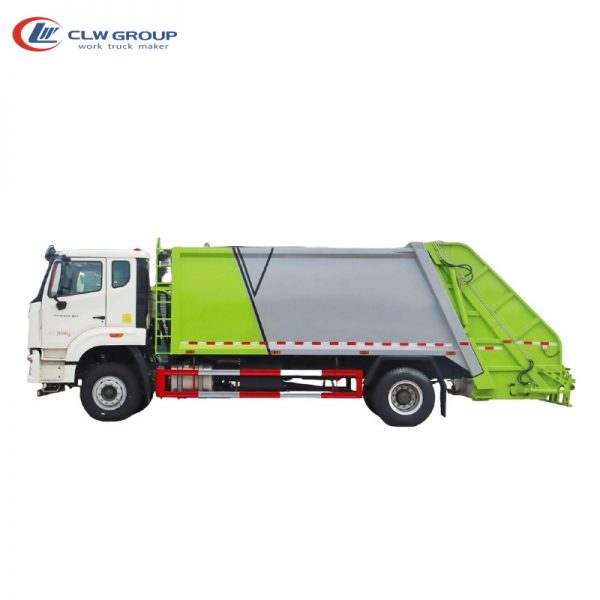Introduction:
Truck mounted cranes are versatile pieces of equipment widely used in various industries such as construction, transportation, and logistics. These cranes are mounted on trucks, providing mobility and flexibility in lifting and moving heavy loads. Understanding the specifications of truck mounted cranes is crucial for selecting the right equipment for specific tasks. In this article, we will delve into the detailed specifications of truck mounted cranes, including capacity, boom length, reach, and other key features.
Capacity:
One of the most critical specifications of a truck mounted crane is its lifting capacity. The capacity of a crane is typically measured in tonnage and represents the maximum weight that the crane can lift safely. Truck mounted cranes come in a wide range of lifting capacities, from smaller models with a capacity of a few tons to larger cranes capable of lifting tens of tons. When selecting a truck mounted crane, it is essential to consider the weight of the loads that will be lifted regularly to ensure that the crane's capacity meets the requirements of the job.
Boom Length:
The boom length is another important specification to consider when evaluating a truck mounted crane. The boom is the arm of the crane that extends outward and upward to reach the load. The length of the boom determines the crane's reach and height capabilities. Truck mounted cranes are available with booms of varying lengths, from shorter booms suitable for confined spaces to longer booms for reaching higher elevations. When choosing a crane, it is essential to consider the working environment and the required reach to ensure that the boom length meets the project's needs.

Reach:
In addition to boom length, the reach of a truck mounted crane is a key specification to consider. Reach refers to the horizontal distance from the crane's center to the point where the load is being lifted or placed. The reach of a crane can vary depending on the boom configuration and design. Some truck mounted cranes are equipped with telescopic booms that can extend and retract to adjust the reach as needed. Understanding the reach of a crane is essential for determining its suitability for specific lifting tasks, especially when working in tight or hard-to-reach areas.
Stability:
Stability is a crucial factor to consider when evaluating truck mounted crane specifications. The stability of a crane is determined by factors such as the crane's design, weight distribution, and outrigger configuration. Ensuring that a crane is stable during lifting operations is essential for safety and efficiency. Truck mounted cranes are equipped with outriggers – extendable legs that provide additional support and stability when the crane is in operation. It is important to understand the stability features of a crane and ensure that it is properly set up and secured before lifting any loads.
Mobility:
One of the key advantages of truck mounted cranes is their mobility. These cranes are mounted on trucks, allowing them to be easily transported to different job sites. Mobility is a critical specification to consider, especially for projects that require frequent relocation of equipment. Truck mounted cranes offer the flexibility to move quickly between sites and perform lifting tasks efficiently. When evaluating the mobility of a crane, factors such as truck size, maneuverability, and travel speed should be taken into account to ensure that the crane can meet the project's requirements.
Control System:
The control system of a truck mounted crane is an essential specification that influences the crane's operation and performance. The control system includes the controls and mechanisms used to operate the crane, such as joysticks, levers, and buttons. Advanced truck mounted cranes may be equipped with electronic control systems that offer features such as precision control, load monitoring, and safety functions. Understanding the control system of a crane is important for ensuring safe and efficient operation, as well as for training operators on how to use the equipment effectively.
sources tell me :
Safety is paramount when operating a truck mounted crane, and the safety features of the crane play a crucial role in preventing accidents and ensuring the well-being of workers. Truck mounted cranes are equipped with various safety features, such as overload protection systems, emergency stop buttons, and warning alarms. It is important to familiarize yourself with the safety features of a crane and ensure that they are functioning correctly before using the equipment. Regular maintenance and inspections are also essential to keep the crane in safe working condition.
Cost:
Cost is a significant factor to consider when evaluating truck mounted crane specifications. The cost of a crane can vary depending on factors such as lifting capacity, reach, boom length, and additional features. It is important to weigh the upfront cost of a crane against its capabilities and suitability for the intended use. In addition to the purchase price, other costs to consider include maintenance, repairs, and operating expenses. By carefully considering the cost of a truck mounted crane in relation to its specifications and performance, you can make an informed decision that aligns with your budget and project requirements.
Conclusion:
Truck mounted cranes are essential equipment for lifting and moving heavy loads in various industries. Understanding the specifications of a crane is crucial for selecting the right equipment that meets the requirements of a project. Key specifications to consider include lifting capacity, boom length, reach, stability, mobility, control system, safety features, and cost. By carefully evaluating these specifications and matching them to the needs of a project, you can ensure safe and efficient operation of a truck mounted crane.
